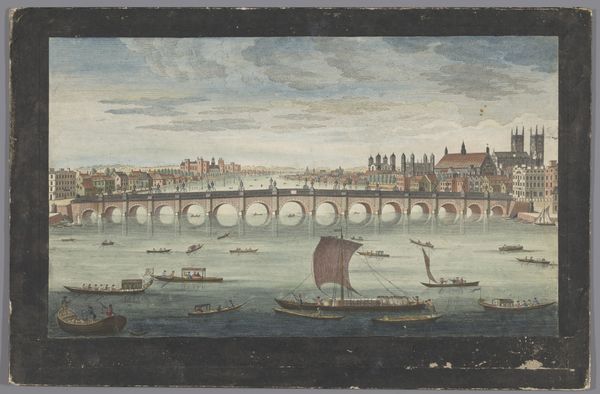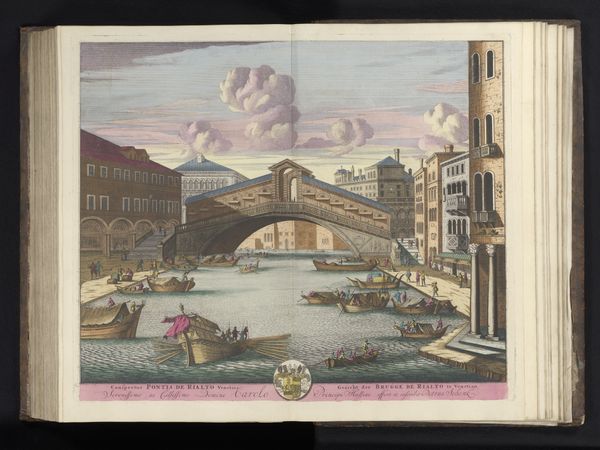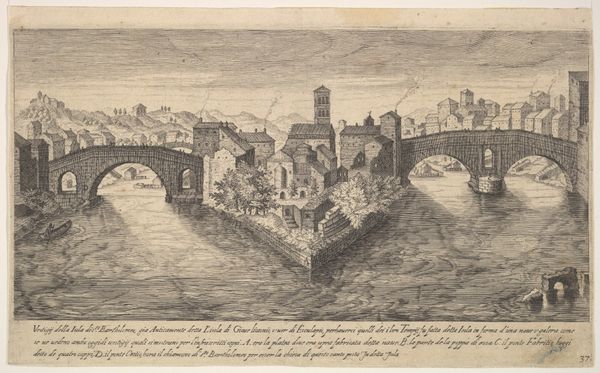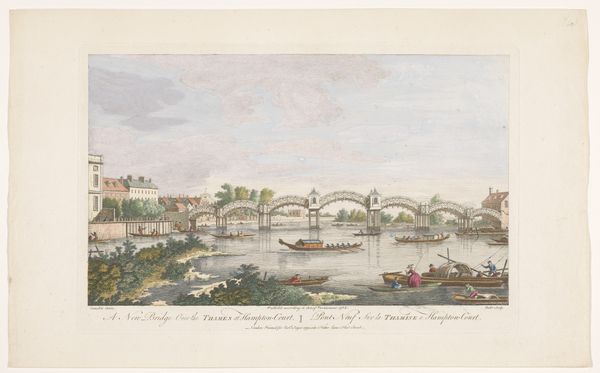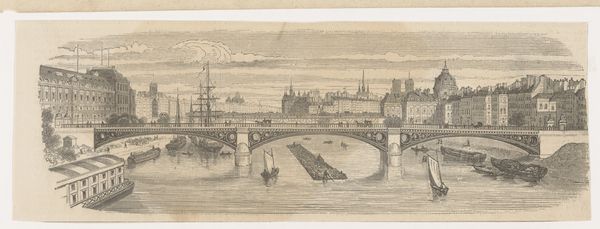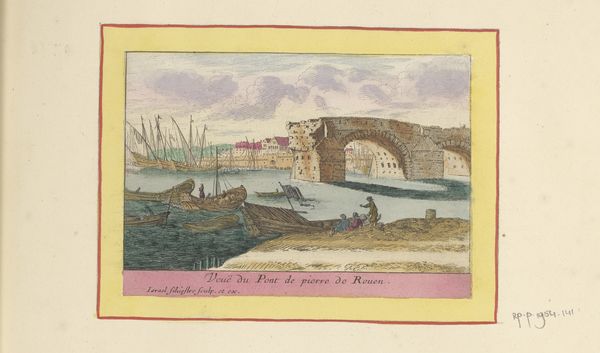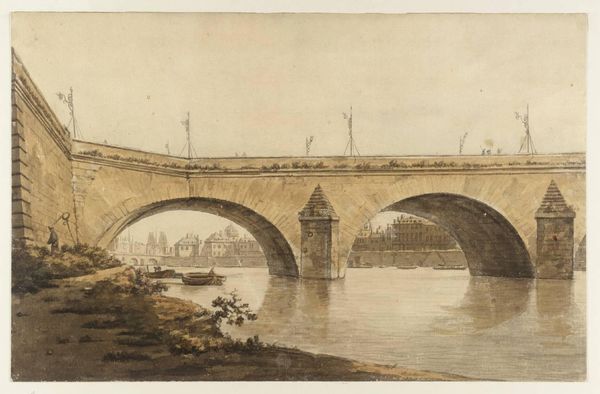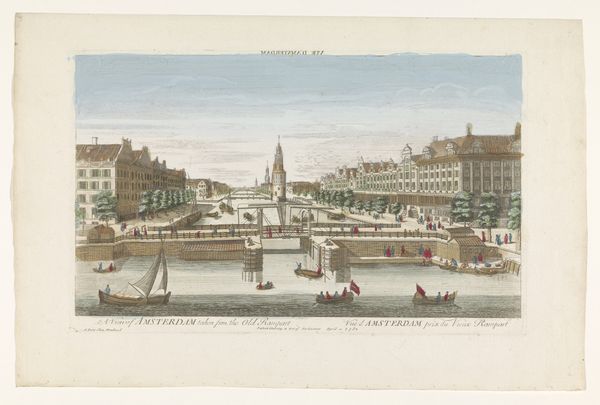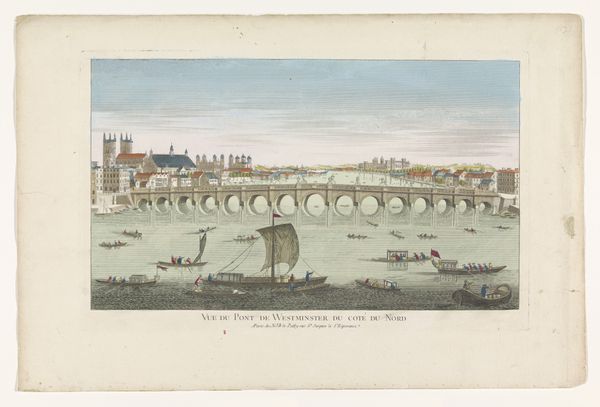
drawing, print, etching, watercolor
#
drawing
#
water colours
#
baroque
# print
#
etching
#
landscape
#
watercolor
#
coloured pencil
#
cityscape
#
watercolor
Dimensions: height 104 mm, width 149 mm, height 532 mm, width 320 mm
Copyright: Rijks Museum: Open Domain
Curator: I find this cityscape strangely enchanting, a watercolor and etching entitled "Gezicht op Rouen," created before 1664 by Israel Silvestre. What are your initial thoughts? Editor: My first impression is one of tranquility, but also of human ambition. The architectural details suggest a society reaching for the heavens. The watercraft hint to stories of commerce and exploration, the river being both pathway and connector. Curator: It’s interesting that you picked up on ambition so quickly. The piece employs a clear horizon line, establishing a stable visual foundation upon which the architectonic elements are methodically organized. The use of color reinforces this structural clarity, the chromatic key modulating from cooler tones for sky and water toward warm hues in the architecture. The repetition of the arches forms an interesting set of geometric relationships that provide a good visualization of Alberti's concepts. Editor: Alberti's theories definitely resonate within the structure, yet consider how the arched bridge mirroring the sky and hillside symbolically links earthly and spiritual realms, and also how throughout history, bridges often symbolize passages or a sense of overcoming a great obstacle, a feat of construction for humans by means of material objects. Curator: True, but from a purely compositional perspective, the bridge acts as a horizontal counterpoint to the vertical thrust of the cathedral and the gently rising hill, thus giving us a strong composition. There's a delicate balance between linear precision, visible through carefully etched outlines and a textural fluidity, thanks to watercolor washes. Editor: Don't ignore the boats in the foreground—they evoke journeys, whether literal voyages for merchants or metaphorical spiritual quests. And that distant hill topped by what looks like some sort of fortification—perhaps guarding the city, acting like a silent watchtower watching over this realm of commerce. I'm curious, were prints widely available to the public at this time, in Rouen? Was this maybe an attempt to capitalize on regional pride in such structures? Curator: Silvestre probably distributed it for a wealthy elite. As prints, they could be reproduced easily, becoming quite popular with collectors, which ensured his name would have some posterity in this period. What strikes me is his subtle interplay between the structural rigidity of the city and nature, its delicate flux in form, especially in the waterscape, yet rendered through these permanent and fixed etched lines. Editor: The artist provides an interplay that immortalizes human attempts at dominating our terrestrial confines. So in this scene, we get the bridge, the buildings, even ships, as temporal achievements and then are confronted by a lasting view that emphasizes the longer term forces. This piece isn't just a landscape or a cityscape; it captures a moment where human will meets nature’s rhythm. Thank you. Curator: Indeed, thank you. This has given me some further lines of enquiry regarding the color theory in landscapes in Silvestre's other prints, which should further inform the oeuvre of the artist.
Comments
No comments
Be the first to comment and join the conversation on the ultimate creative platform.

